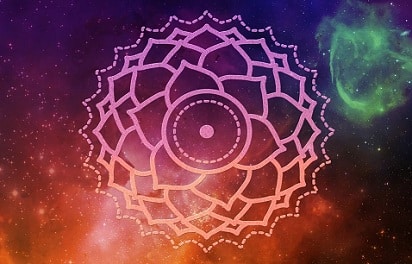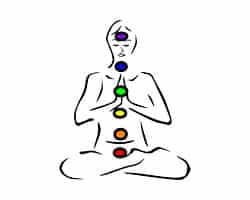 The term chakra comes from the Sanskrit language and can be translated as “circle” . Also accepted as a chakra by the Royal Spanish Academy ( RAE ) in its dictionary, the concept refers to each energy center that, according to certain Asian philosophies, is located in the body of the human being and is responsible for regulating emotions and the functioning of the organism. .
The term chakra comes from the Sanskrit language and can be translated as “circle” . Also accepted as a chakra by the Royal Spanish Academy ( RAE ) in its dictionary, the concept refers to each energy center that, according to certain Asian philosophies, is located in the body of the human being and is responsible for regulating emotions and the functioning of the organism. .
According to Hinduism , there are six chakras. However, starting at the end of the 19th century , other trends emerged that claim that there are actually seven chakras .
It is important to mention that, according to these theories , the chakras are not physical, but are elements of consciousness. Through the nervous system and the endocrine system, the chakras unite the mind ( consciousness ) with matter (the body ).
That is why it is said that the chakras represent both particular regions of consciousness and precise sectors of the body. They are organized in a system that extends from the base of the spine to the top of the head .
Those who support the existence of chakras assure that it is possible to relate any perception or sense to a chakra. Following this reasoning, you can work on the chakras to improve well-being .
The chakra located at the crown of the head is called the crown chakra or sahasrara , being associated with wisdom . Below, between the eyebrows , the third eye chakra or ajna appears, which is linked to the imagination .
Following in descending order they are found in the laryngeal chakra or visuddha , in the throat and related to communication ; the heart chakra or anahata in the middle of the chest and linked to love ; the solar plexus chakra or manipura in the navel , which defines identity ; the sexual chakra or svadhisthana below the navel and concatenated to vitality ; and the root chakra or muladhara at the beginning of the cerebral column, which connects with the earth .
These names correspond to the modern list of chakras, drawn up in the 19th century, which includes seven instead of the six previously considered: muladara, suadishtana, manipura, anajata, vishuda and añakia . The temporal distance between both visions of this concept is considerable, since the six just presented appeared in a Hindu text from the second century, the Yoga-kundalini-upanishad .
 During the first millennium, the belief of the various Buddhist traditions of secret mantra and tantra, which is encompassed under the name of vasraiana , also used Sanskrit names for these six chakras, which were considered " energy centers." It is worth mentioning that this list was respected until the middle of the second millennium.
During the first millennium, the belief of the various Buddhist traditions of secret mantra and tantra, which is encompassed under the name of vasraiana , also used Sanskrit names for these six chakras, which were considered " energy centers." It is worth mentioning that this list was respected until the middle of the second millennium.
A very important concept in this context is theosophy , a group of doctrines and teachings that Helena Petrovna Blavatsky spread at the end of the 19th century, with a focus on a type of knowledge that does not age or go out of fashion, since it reflects reality without subjectivity . According to the followers of theosophy, human beings gradually access this knowledge, just as happens with the sciences, which are fed by observation but are not an invention of our species.
The connection took place when theosophy became interested in chakras. In 1918, for example, the author Arthur Avalon , born in Calcutta, published the book The Power of the Serpent , whose importance is considerable for Tantric theosophy. Avalon presented it as a translation of the Shat-chakra-nirupana and the Padaka-pañchaka , two works written in Sanskrit.
Although this author respected the supernatural, he later stated that the chakras were related to the endocrine glands , so that through different exercises the production of certain hormones would be possible.
